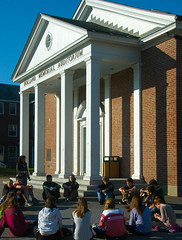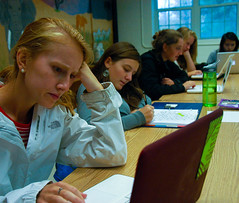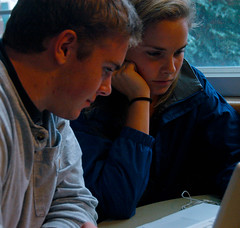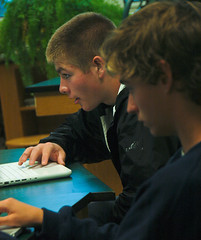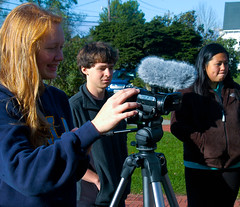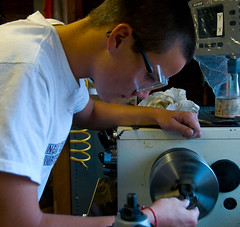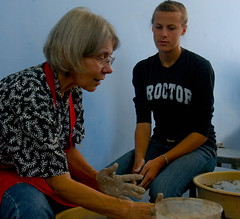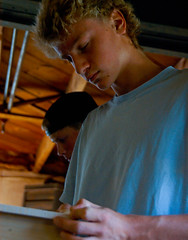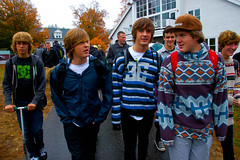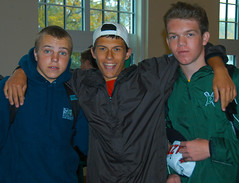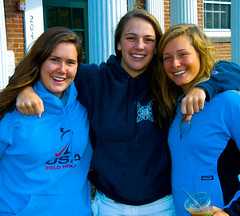One of my projects this past week was to edit, proof, and even write text for the next incarnation of our admission viewbook. I've had a hand in this process for 28 years, but times--and the task--have changed. Today's brochure needs to have a symbiotic relationship with a website with which many prospective students are already familiar. If the book doesn't reflect the site, we lose the authenticity for which the site is known.
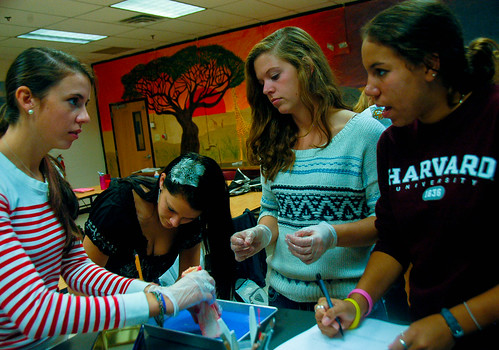
Another change is this: we're not differentiating ourselves from local, public options in the 21st Century; our applicants are contrasting Proctor to boarding schools all over the Northeast. So the shared advantages of residential schools (academic excellence, close community, structure, faculty-student relationships, etc.) don't need much attention; they are the ante for being in the game. This liberates us to focus on relatively specific differentiating qualities. For example, we want to convey
the continuum of experiential learning that extends to campus. People already know about Ocean Classroom, Mountain Classroom, programs abroad, etc. It is hands-on education in Andover, New Hampshire that is newsworthy.
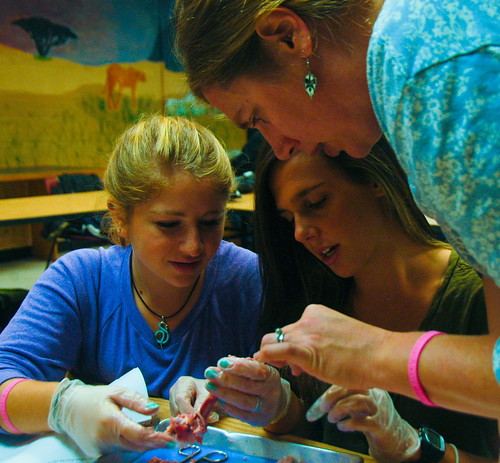
These Spanish 1 students are demonstrating their knowledge of personal pronouns using physical spaces marked on a walkway.
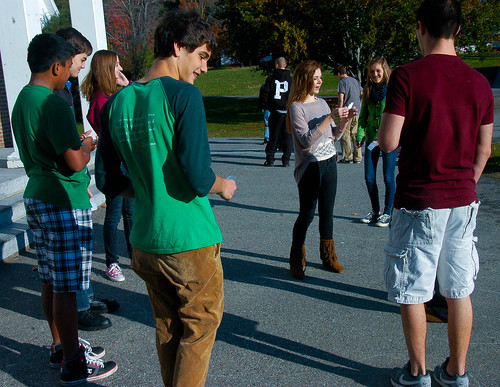
Notice that this ability to communicate concrete details about the school eliminates the common need to turn control of the viewbook over to professional writers and design artists who have to rely on glitz, bland aphorisms and expensive tricks to compensate. Another theme that we're emphasizing is the customization of each student's experience that is enabled by the breadth of curriculum.
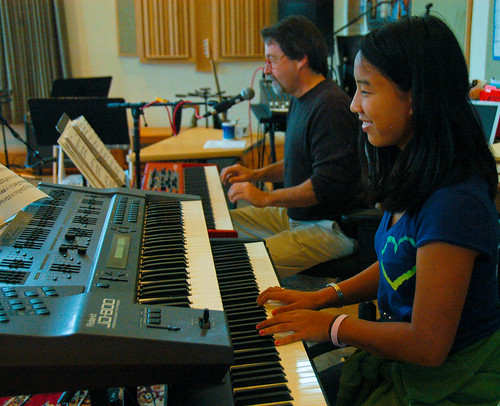
Another factor to keep in mind while crafting tomorrow's viewbook is the degree to which teenagers are finding a school through data-rich search engines. Imagine what comes up when you indicate preference for a school that offers a modern recording studio, Advanced Placement environmental science, a forestry program, on-campus skiing, kayaking, ski-jumping, or electives in math design theory, social activism, surveying, forensics, play writing, journalism, etc.
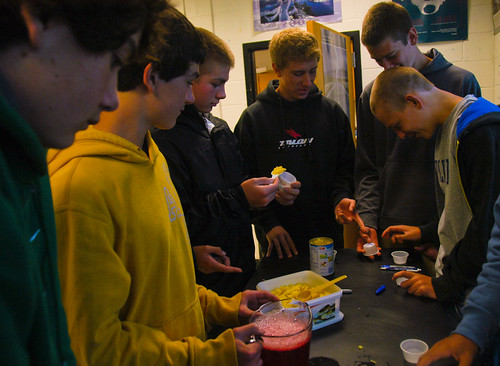
With so much about Proctor in the realm of common knowledge, the next brochure takes the bold step of explaining the teaching model that attracts and retains so many superior faculty. We've never tried to do this before, but it is a legitimate point of departure. Instead of asking the typical teacher to teach five or six sections with three or four preparations (different courses), we have most folks teaching three sections with two preps. The repercussions are many: the faculty has to be large (which is expensive,) but they have time and energy to pour into advising, providing academic support, dorm parenting, coaching and "having a life."
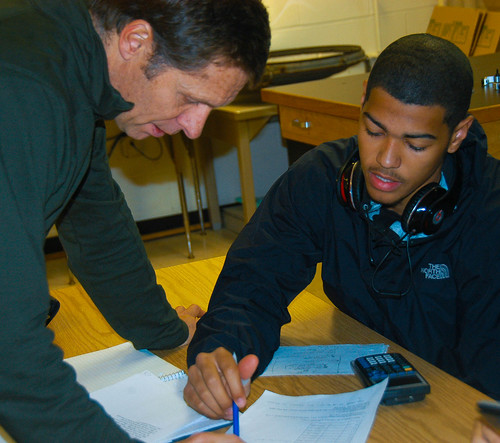
Here's a statistic that should grab some attention: twenty-seven Proctor teachers (one-third of the population) came to this school from other independent schools. Our teaching model is--in the words of one observer--"a magnet for teaching talent."
Below, John Beard leads his Mandarin Chinese students through some introductory Tai Chi.
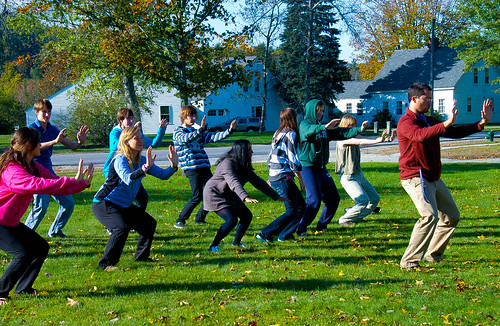
Michael Littman listens as acting students apply the words of Shakepeare's "All the world's a stage" to a contemporary scene in a coffee shop.
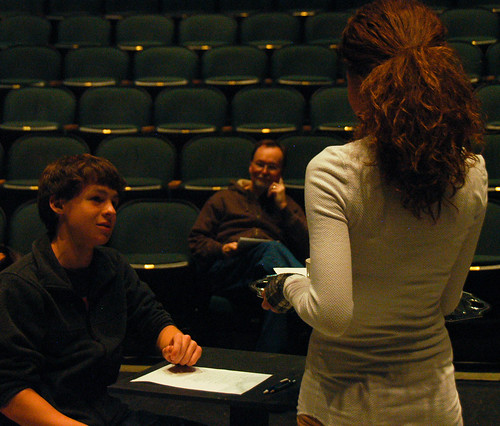
Yesterday, at lunch, I asked Admission Director Chris Bartlett what he envisions for the viewbook's cover. "Something very simple," he responded, "Perhaps just the logo with the new, organic tree, on a field of green. As always, less is more." That works for me, for it will
elevate the content of a very special book.















